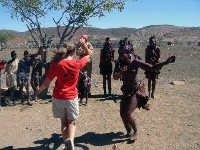Rhodes College junior Anthony Siracusa says that traveling by bicycle sometimes takes longer than expected. But not for the reason you might think.
“It’s a social activity,” he says. “You run into people on the street, and they want to talk.”
Even so, Siracusa hopes to get more bicycles on the roads.
Siracusa represented the Bicycle and Pedestrian Advisory Committee (BPAC) at the Memphis City Council’s park committee meeting last week. Under a joint resolution, the council and the Shelby County Commission want to expand BPAC’s authority and designate it as a permanent standing committee of the area’s long-range transportation planning arm, the Metropolitan Planning Organization (MPO). The MPO is expected to vote on the change during an August 30th meeting.
“This raises the political profile of BPAC,” Siracusa says of the proposal. “This was a committee organized for a specific purpose.”
BPAC was formed in 2003 to advise on a 25-year comprehensive transportation plan. Now, Siracusa hopes the group will be able to work more closely with the city engineer’s office to add bicycle facilities to area roads.
“One thing BPAC was adamant about from the very beginning was writing into MPO policy that every time a street is repaved, a bike lane is added,” he says.
In 2000, the U.S. Department of Transportation said that states receiving federal dollars needed to incorporate bicycle and pedestrian amenities into transportation pro-jects unless “exceptional circumstances exist.” However, only half of all states have complied, according to the national Complete Streets Coalition.
“Here’s the problem,” says local bike and pedestrian advocate Steven Sondheim. “The federal regulations say when you improve a street or make a new street, they recommend putting in bike and pedestrian facilities, unless there is some compelling reason not to. It’s a recommendation. It’s not a law.”
Though Memphis has designated bicycle routes throughout the city, riding on those roads can still be dangerous. (Insert your own joke about Memphis drivers here.)
“In the three years [since the plan was created], nothing has happened,” Sondheim says. “There is not one bike lane in the city of Memphis. There are some in Germantown and Bartlett.”
Though the MPO plan includes recommendations for bicycle lanes, the group has no authority to implement its plans. Humphreys Boulevard is the only current road project that includes bike lanes.
Perhaps Memphis is behind the curve. Across the country, cities are adding bicycle lanes as part of “complete streets” programs. The idea, utilized in Chicago, Charlotte, and Iowa City, is that public streets should accommodate a variety of transportation, including areas for motor vehicles, bicycles, mass transit, and pedestrians.
Some planners have argued that adding extra vehicle lanes has not reduced traffic congestion; it has just invited more drivers onto the road. Supporters of complete streets initiatives say biking and walking reduce congestion and help fight obesity-related diseases.
The American Association of Retired People and various disability groups are also fans of the program. The environmental argument is a no-brainer, especially with higher gas prices and global warming.
“I see a direct link between creating bicycle facilities and reclaiming streets for a healthier way of life,” Siracusa says. “Bicycle facilities typically reflect people-friendly cities. It’s a mark of livable communities where people like being outside. … Not to mention, bikes are fun.”
The history major would like to see a pilot program add bike lanes to a target neighborhood, preferably in Cooper-Young.
“People are already riding bikes there,” he says. “The least we can do is make them safer.”
But if Memphians want bicycle lanes, they are going to have to lobby for them.
“I wish we lived in a place like Chicago where the mayor got on a bicycle and led the way,” Siracusa says. “At the same time, Memphians have to decide: Do we want to see increased bicycle and pedestrian access in our city?”
Sondheim says a group of cyclists will be starting to identify specific roads for bike lanes as early as this fall.
“What we want is [more lanes] in the next year or two,” he says. “We can’t wait until 2030. That’s part of the problem with long-range plans.”
Sometimes, they just leave you spinning your wheels.
 Patrick Deveau
Patrick Deveau 